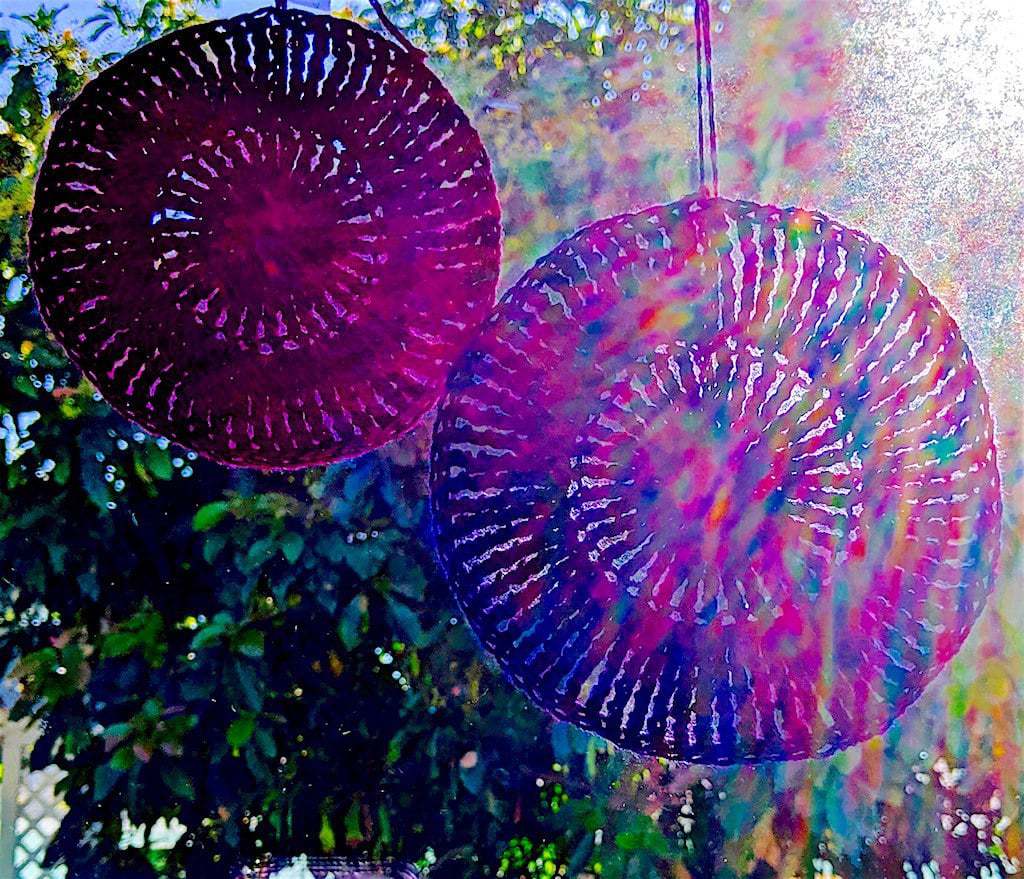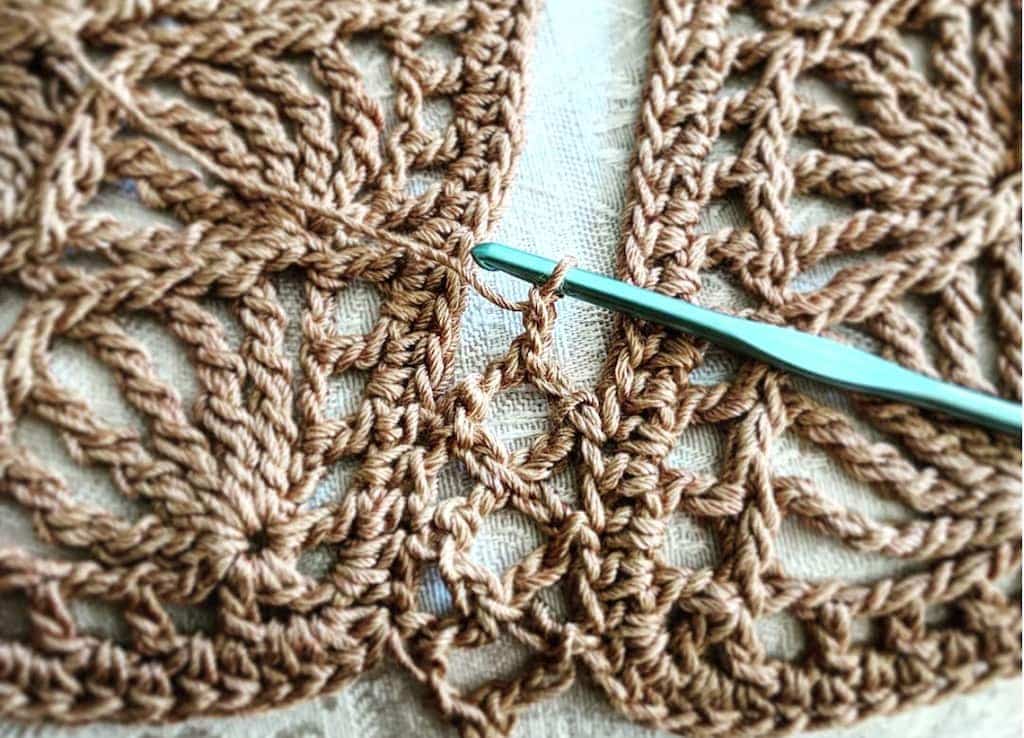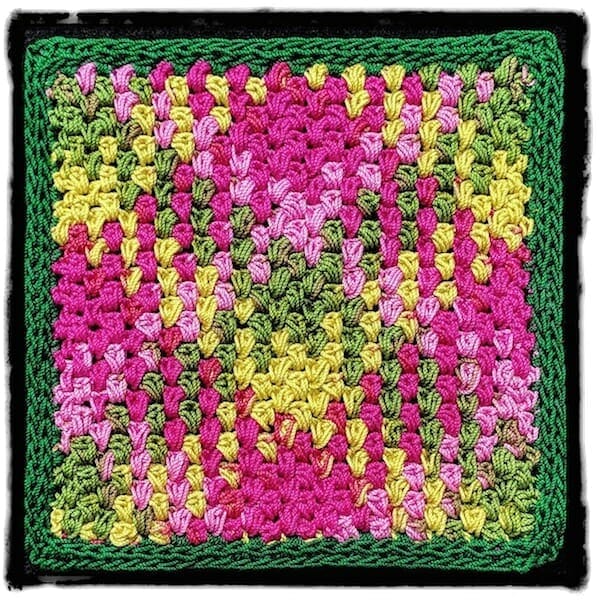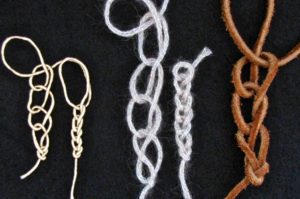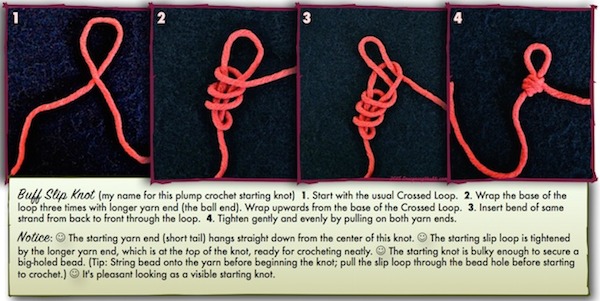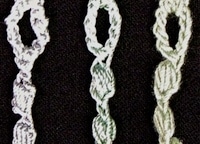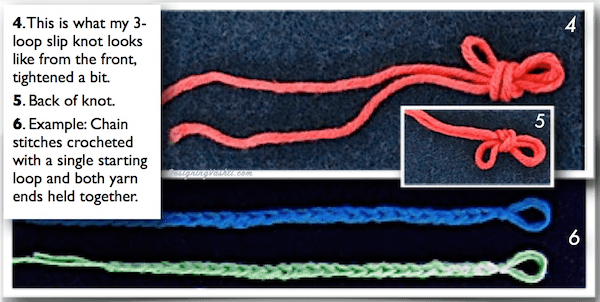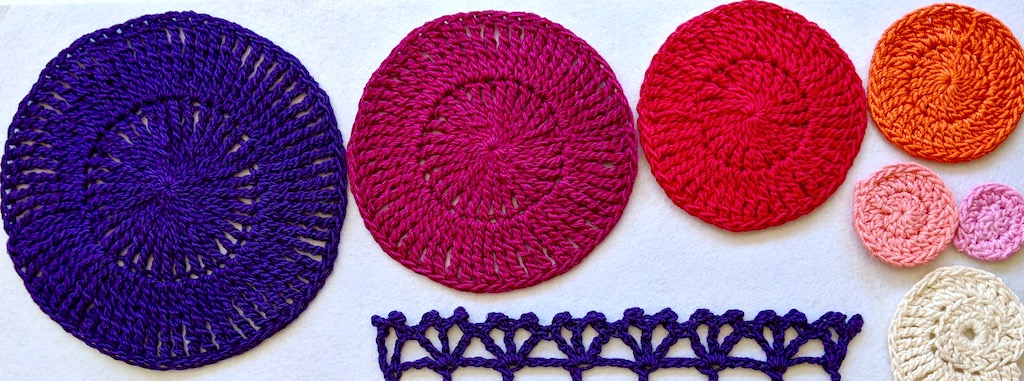
Have a look at these simple flat circles I swatched last month. This is research for my Tall Stitch Virtuosity crochet class. Each circle has a closed center and just two rounds of a tall stitch. The yarn is my own Lotus yarn. Lots of things to notice.
Formula for Tall Stitch Circles
A consistent mathematical pattern developed, and I’m going to trust it from now on. From left to right (see above):
- Purple circle: chain 7 to begin each round; 36 quadruple trebles in round 1 (see Closed Centers note below), 72 in round 2. For a US quadruple treble (quadtr), yarn over 5 times to begin stitch.
- Magenta circle: chain 6 to begin each round; 30 triple trebles in round 1 (see Closed Centers note below), 60 in round 2. For a US triple treble (ttr), yarn over 4 times to begin stitch.
- Red circle: chain 5 to begin each round; 24 double trebles in round 1 (see Closed Centers note below), 48 in round 2. For a US double treble (dtr), yarn over 3 times to begin stitch.
- Orange circle: chain 4 to begin each round; 18 trebles in round 1, 36 in round 2. For a US treble (tr or tc), yarn over 2 times to begin stitch.
- Peach circle: chain 3 to begin each round; 12 double crochets in round 1, 24 in round 2. For a US double crochet (dc), yarn over once to begin stitch.
- Pink circle: chain 2 to begin each round; 8 half doubles in round 1, 16 in round 2. For a US half double (hdc), yarn over once to begin stitch.
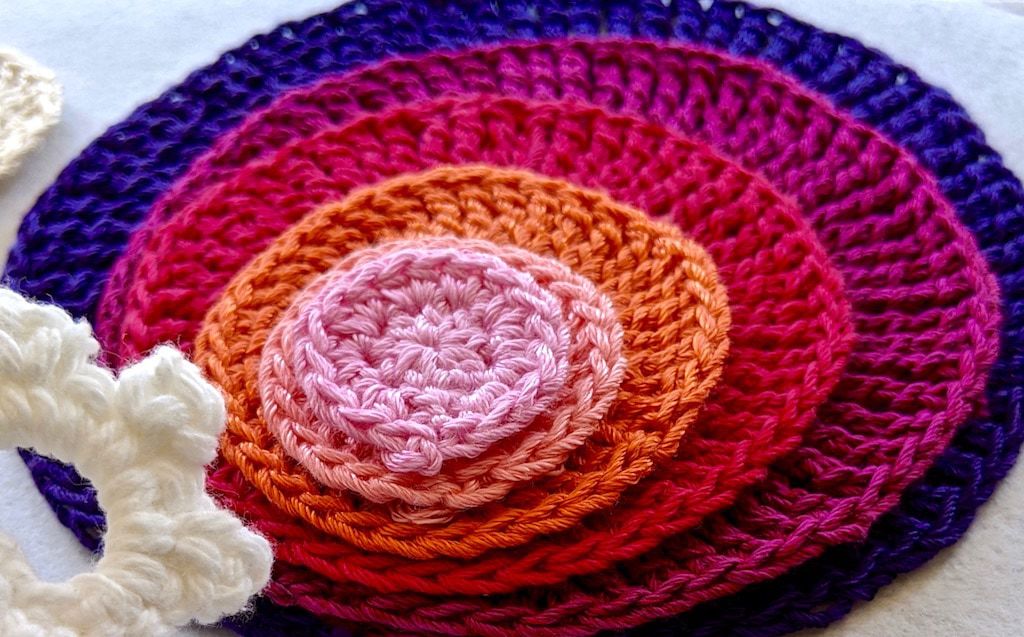
It’s thanks to the really tall stitches that I understand where I’ve gone wrong with crocheting circles (of any stitch) in the past. I couldn’t actually tell if they were going to come out alright while I crocheted these. They didn’t seem like they were going to lie flat, but they did, beautifully and consistently, once I gently blocked them.
This means the ol’ 1970’s advice to wing it (instead of using a formula)— to add stitches when it looks like you need to as you crochet each round? That way lies madness, for me anyway.
Closed Centers (note)
I used the magic ring (PlanetJune has good explanation) for all of them. I was unable to fit more than 18 stitches in the ring and still be able to close it completely. So, when the tall stitch circles are made with double trebles or taller (the red, magenta, and purple ones shown), I put 18 stitches in the ring plus the necessary amount of Y-stitches distributed evenly around.
This means the red circle of double trebles required 6 Y-stitches, for a total of 24 stitches in Round 1 (18 dtr + 6 Y-sts = 24). The magenta circle of triple trebles needed 12 Y-stitches in addition to the 18 ttr to total 30 stitches for Round 1 (18 ttr + 12 Y-sts = 30). For the purple circle, Round 1 needs to have 36 stitches in it, so 18 quadruple trebles plus 18 Y-stitches (18 quadtr + 18 Y-sts = 36).
Y-Stitch? Huh?
I don’t have step-outs at hand for showing how to do a Y-stitch for this. Have a look at Tamara’s over at Moogly—except that I don’t chain between the tall stitch and the Y-stitch that is linked to it.
Why Really Tall Stitch Circles?
They’re surprisingly beautiful. A simple architecture that one somehow never sees—I found no circles of really tall stitches anywhere. You could accent them with surface crochet in contrast colors, or alternate with rounds of shorter stitches. That would make for a nice future blog post.
